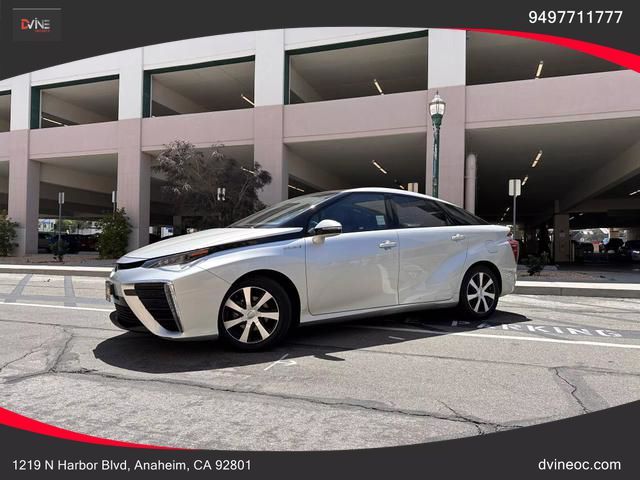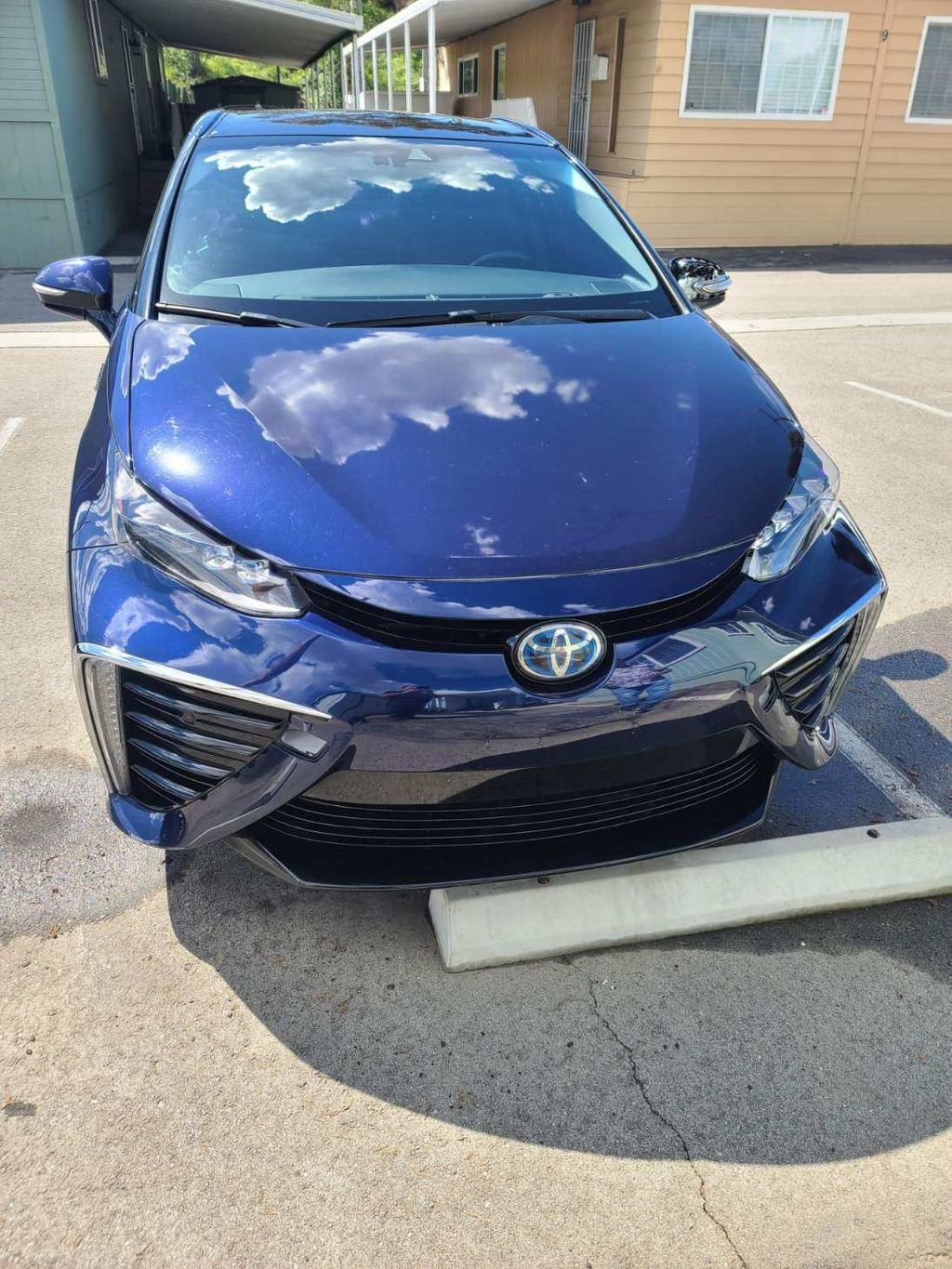
2019 TOYOTA MIRAIVIN: JTDBVRBD2KA006538
Historical Records
Damage to rear
Vandalism damage reported
Damage to front
| Year | 2019 |
| ODO | 2929 mi |
| Seller | Hidden text (Hidden text) |
| Location | El Monte, CA, 91732 |
| Date | appeared a year ago latest price $8828 |
| Sale Website Type | classifieds |
| Notes | |
| Hidden text | |



| Body Style | 4-door Sub-Compact Passenger Car |
| Drive | FWD |
| Fuel Type | Hydrogen Fuel |
| Year | 2019 |
| ODO | 911 mi |
| Seller | Hidden text (Hidden text) |
| MSRP | $3184 |
| Location | Tustin, CA, 92782 |
| Date | appeared 5 years ago latest price $3611 sale post disappeared 2022-04-07 |
| Sale Website Type | classifieds |
| Notes | |
| Hidden text | |
| Body Style | Sedan |
| Color | Blue |
| Transmission | 1-Speed Automatic |
| Engine | Electric |
| Drive | FWD |
| Fuel Type | Electric |
- FE
- Audio System Premium Brand Speakers: JBL
- Hidden text
- Driver seat memory
- Hidden text
- Fuel Consumption: Highway: 66 mpg
- Hidden text
- Machined aluminum rims w/ painted accents
- Hidden text
- Power retractable mirrors
- Hidden text
- Simulated carbon fibre dash trim
- 1214
- Audio controls on steering wheel
- Hidden text
- Dual illuminated vanity mirrors
- Hidden text
- Heated driver mirror
- Hidden text
- Mechanical remote trunk release
- Hidden text
- Power Windows
- Hidden text
- Simulated carbon fibre door trim
- Hidden text
- Urethane shift knob trim
- Hidden text
- 4-wheel ABS Brakes
- Hidden text
- Digital Audio Input
- Hidden text
- Front ventilated disc brakes
- Hidden text
- Leatherette seat upholstery
- Hidden text
- Passenger Airbag
- Hidden text
- Safety Connect
- Hidden text
- Tilt and telescopic steering wheel
- Hidden text
- ABS And Driveline Traction Control
- Hidden text
- Driver knee airbags
- Hidden text
- Fuel Consumption: City: 66 mpg
- Hidden text
- MP3 Player
- Hidden text
- Power remote w/tilt down passenger mirror adjustment
- Hidden text
- Simulated carbon fibre center console trim
- Hidden text
- Trip Computer
- Hidden text
- Adaptive Cruise Control
- Hidden text
- Driver And Passenger Heated-Cushion
- Hidden text
- Front reading lights
- Hidden text
- Leatherette steering wheel trim
- Hidden text
- Power remote w/tilt down driver mirror adjustment
- Hidden text
- Side airbag
- Hidden text
- Total Number of Speakers: 11
- Hidden text
- Surround Audio
- Hidden text
- Wiper park
Model Analytics & Market Report
Depreciation
| Year | Average Mileage | Average Price | % Left | % Lost | ||
|---|---|---|---|---|---|---|
| 2019 MSRP | 0 mi | $52,529 | — | — | 100% | 0% |
| 2020 | 17,476 mi | $18,949 | +$0 | +0% | 36.07% | 63.93% |
| 2021 | 26,214 mi | $17,688 | +$1,261 | +6.65% | 33.67% | 66.33% |
| 2022 | 34,952 mi | $15,988 | +$1,700 | +9.61% | 30.44% | 69.56% |
| 2023 | 43,690 mi | $12,495 | +$3,493 | +21.85% | 23.79% | 76.21% |
| → Visit 2019 TOYOTA MIRAI depreciation page to see full data. | ||||||
Price vs Mileage
| Mileage | Average Price | Sample Size |
|---|---|---|
| 0 mi | $21,699 | 11 sales |
| 5,000 mi | $19,938 | 36 sales |
| 10,000 mi | $19,992 | 85 sales |
| 15,000 mi | $18,995 | 177 sales |
| 20,000 mi | $19,543 | 212 sales |
| 25,000 mi | $18,550 | 283 sales |
| → Visit 2019 TOYOTA MIRAI depreciation page to see full data. | ||
VIN Decoder — 62 records
Anti-lock Braking System (ABS) means a portion of a service brake system that automatically controls the degree of rotational wheel slip during braking by: (1) Sensing the rate of angular rotation of the wheels; (2) Transmitting signals regarding the rate of wheel angular rotation to one or more controlling devices that interpret those signals and generate responsive controlling output signals; and (3) Transmitting those controlling signals to one or more modulator devices that adjust brake actuating forces in response to those signals.
An auto-reverse system enables power windows and sunroofs on motor vehicles to automatically reverse direction when such power windows and panels detect an obstruction. This feature can prevent children and others from being trapped, injured, or killed by the power windows and sunroofs.
Electric vehicle warning sounds are a series of sounds designed to alert pedestrians to the presence of electric drive vehicles such as hybrid electric vehicles (HEVs), plug-in hybrid electric vehicles (PHEVs), and all-electric vehicles (EVs) travelling at low speeds. Vehicles operating in all-electric mode produce less noise than traditional combustion engine vehicles and can make it more difficult for pedestrians, the blind, cyclists, and others to be aware of their presence.
ESC is a computerized technology that improves a vehicle's stability by detecting and reducing loss of traction (skidding). When ESC detects loss of steering control, it automatically applies the brakes to help steer the vehicle in the driver's intended direction. Braking is automatically applied to wheels individually, such as the outer front wheel to counter oversteer, or the inner rear wheel to counter understeer. Some ESC systems also reduce engine power until control is regained.
A keyless ignition system permits starting a car without a physical key being inserted into an ignition. Instead, a small device known as a "key fob" transmits a code to a computer in the vehicle when the fob is within a certain close range. When the coded signal matches the code embedded in the vehicle's computer, a number of systems within the car are activated, including the starter system. This allows the car to be started by simply pressing a button on the dashboard while the key fob is left in a pocket or a purse. The vehicle is usually shut down by pushing the same button.
A TPMS is an electronic system designed to monitor the air pressure inside the pneumatic tires on various types of vehicles. TPMS can be divided into two different types - direct and indirect. Direct TPMS employ pressure sensors on each wheel, either internal or external. The sensors physically measure the tire pressure in each tire and report it to the vehicle's instrument cluster or a corresponding monitor. Indirect TPMS does not use physical pressure sensors but measure air pressures by monitoring individual wheel rotational speeds and other signals available outside of the tire itself.
When the traction control computer detects a driven wheel or wheels spinning significantly faster than another, it invokes an electronic control unit to apply brake friction to wheels spinning due to loss of traction. This braking action on slipping wheels will cause power transfer to the wheels with traction due to the mechanical action within the differential.
A backup camera, also known as a rearview video system, helps prevent back-over crashes and protects our most vulnerable people - children and senior citizens - by providing an image of the area behind the vehicle. A backup camera helps the driver see behind the vehicle while in reverse.
A CIB system is an automatic emergency braking system designed to detect an impending forward crash with another vehicle. CIB systems automatically apply the brakes in a crash imminent situation to slow or stop the vehicle, avoiding the crash or reducing its severity, if the driver does not brake in response to a forward collision alert.
A DBS system is an automatic emergency braking system designed to detect an impending forward crash with another vehicle. DBS systems automatically supplement the driver's braking in an effort to avoid a crash if the driver does not brake hard enough to avoid it.
An FCW system monitors a vehicle's speed, the speed of the vehicle in front of it, and the distance between the vehicles. If the vehicles get too close due to the speed of either vehicle, the FCW system will warn the driver of the rear vehicle of an impending crash so that the driver can apply the brakes or take evasive action, such as steering, to prevent a potential crash. FCW systems provide an audible, visual, or haptic warning, or any combination thereof, to alert the driver of an FCW-equipped vehicle of a potential collision.
BSW alerts drivers with an audio or visual warning if there are vehicles in adjacent lanes that the driver may not see when making a lane change.
An LDW system monitors lane markings and alerts the driver if their vehicle drifts out of their lane without a turn signal or any control input indicating the lane departure is intentional. An audio, visual or other alert warns the driver of the unintentional lane shift so the driver can steer the vehicle back into its lane.
An LKA system prevents a driver from unintentionally drifting out of the intended travel lane. LKA systems use information provided by Lane Departure Warning (LDW) system sensors to determine whether a vehicle is about to unintentionally move out of its lane of travel. If so, LKA activates and corrects the steering, brakes or accelerates one or more wheels, or does both, resulting in the vehicle returning to its intended lane of travel.
DRL is an automotive lighting system on the front of a vehicle or bicycle, that automatically switches on when the vehicle is in drive, and emits white, yellow, or amber light to increase the conspicuity of the vehicle during daylight conditions.
A semi-automatic headlamp beam switching device provides automatic or manual control of beam switching at the option of the driver. When the control is automatic, the headlamps switch from the upper beam to the lower beam when illuminated by the headlamps on an approaching car and switch back to the upper beam when the road ahead is dark. When the control is manual, the driver may obtain either beam manually regardless of the condition of lights ahead of the vehicle.
Body Class presents the body type based on 49 CFR 565.12(b): "Body type means the general configuration or shape of a vehicle distinguished by such characteristics as the number of doors or windows, cargo-carrying features and the roofline (e.g., sedan, fastback, hatchback)." Definitions are not provided for individual body types in the regulation.
Base price of the vehicle is the cost of a new vehicle with only the standard equipment and factory warranty. It is the cost without any optional packages.
Per 49 CFR 565, Model means a name that a manufacturer applies to a family of vehicles of the same type, make, line, series and body type.
If the model year (MY) is supplied when the VIN is decoded, such as from a crash report or a vehicle registration record, the MY value will be the supplied MY, even if the MY decoded from the VIN differs from the supplied MY. If the MY is not supplied when the VIN is decoded, the MY value will be decoded from the 10th character in the VIN.
This data element captures the city of the manufacturing plant where the manufacturer affixes the VIN.
This data element captures the name of the company that owns the manufacturing plant where the manufacturer affixes the VIN.
This data element captures the country of the manufacturing plant where the manufacturer affixes the VIN.
This data element captures the State or Province name within the Plant Country of the manufacturing plant where the manufacturer affixes the VIN.
Per 49 CFR 565, Series means a name that a manufacturer applies to a subdivision of a "line" denoting price, size or weight identification and that is used by the manufacturer for marketing purposes.
Battery Current (Amps) From field stores the lower value for battery current range in the unit of amperes (amps).
Battery Energy (kWh) From field stores the lower bound of battery energy range in the unit of kilowatt-hour (kWh).
This field captures the location of curtain air bags. Curtain air bags are side air bags that protect the head.
This field captures the location of frontal air bags. Frontal air bags are generally designed to deploy in "moderate to severe" frontal or near-frontal crashes.
This field captures the location of knee air bags, which deploy from a car's lower dashboard, are meant to distribute impact forces on an occupant's legs in the case of a crash, thereby reducing leg injuries.




































